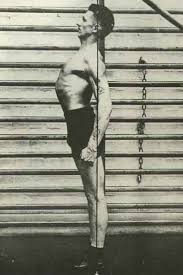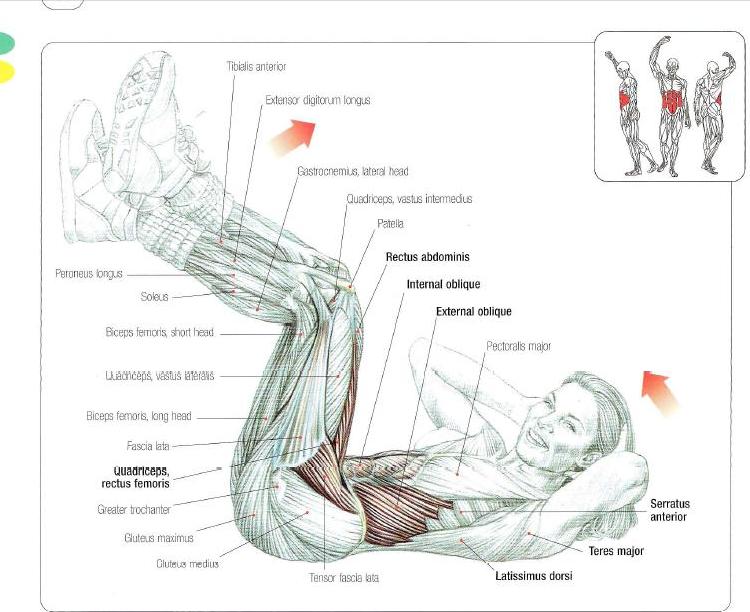Stability – When is it too much?
Okay, so here”s the deal…This past weekend I had an AMAZING group of teachers at my studio for our Reformer 1 training. Eleven of them eager to learn, practice and explore. These weekends are always such a wonderful experience for me because I learn so much. I learn from watching the students move, hearing their questions and concerns, watching them teach, and just being in the space with them as their path to becoming GREAT teachers unfolds.
Not unlike many of these past weekends I had a total moment of clarity about something. This time it was “stability.”
Here”s what happened: We start each day with a mat class. Saturday morning we were midway through doing an advanced version of the side-lying leg series. This is not an easy exercise to execute due to the fact that you are propped up on one elbow with the other arm in the same position pointing toward the ceiling. We were definitely focusing on upper body stability, as this is — in my mind — the most challenging aspect of the exercise. However, something was amiss.
“Alright, let”s stop,” I said (with love in my voice :). “What”s going on in your legs here? No one is moving. You are all working to keep the pelvis and torso so still your legs aren”t moving and you”re looking like if you were walking you”d be in pain! (insert giggles here). See if you can let the leg swing a bit more, stretch the hamstring as the leg comes forward, stretch the hip as the leg moves back. Feel that even though the pelvis can be stable the legs are free to move and the whole upper body can also ebb and flow enough to create a gentle counter balance. Let your body move for heaven”s sake!”
WHAT? Let the torso move back and forth?!#$&! I”ll tell you that some of the students looked at me as if I were speaking an entirely different language.
And here in lies the seed for concern.
Yes, it”s true that as movement teachers we are often concerned with establishing a level of stability in the body that enables our students a sense of center, groundedness, and balance.
Yes, it”s true that for a large portion of the population a lack of the connection between legs and pelvis, arms and upper back or shoulder girdle creates a tremendous amount of disassociation and even pain in the body.
But it is not true that stability is the key, and always the key, to these challenges or disconnections.
There is a truth in the body that goes like this: In order to have stability we must have mobility. The body is never static. It is always moving, adjusting, correcting, contracting and expanding. At least a well Som i et traditionelt kasino byder TivoliCasino deres brugere velkomne til at prove lykken pa alt fra spilleautomater til roulette, BlackJack , poker og meget andet. functioning body is. If we train a body to be “stable” in places where there is not first “mobility” or healthy movement we enter into a battle of effort against effort — essentially training stability or strength on top of tension. Effort plus effort does not equal ease. And isn”t that our goal, a balance between ease and effort producing efficiency, balance, and control?
In order to restore balance and stability in the body we should seek out, in each individual student — as every case is different — where the body needs mobility and where it then needs stability.
As Pilates teachers in particular I believe, and have witnessed and been victim to, the thought that stability is always the answer. In the first half of my Pilates training as a student I was taught to always draw my scapula down, to “anchor” them into my back, so much so that for quite some time my serratus and lower traps became so tight that I was in chronic pain around my shoulder blades, my collar bones began to slope down, and my middle back became excruciatingly tight.
I have also seen the low back and pelvis become so rigid in students from constantly keeping it still that the low back lost it”s ability to be malleable and participate in side bending and rotation effectively, therefore limiting movements in the hips and legs not to mention articulation through flexion and extension.
Unfortunately, I think that as teachers we take concepts that are appropriate for some bodies or essential for new students and never evolve beyond those principles to explore what”s next, to reach out and discover beyond neutral spine and stable scapula what the body”s potential for movement is!!
We get fixated and stuck teaching “core stability” using terms like anchor, root, hold, pin together, knit together etc. even when stability has been established and we should instead be looking at the truth of the body and how to integrate it”s new connection to core to find freedom in our movement.
With the example of the teachers in training this week and the advanced side-lying leg series, it seemed to me that they were primarily working under the assumption that stability and not freedom of movement was their key objective.
What I would say is that at this point most of them had established a substantial core connection and could maintain stability in the pelvis enough to feel the differentiation between hip and leg (attuning to femur glide with ease), and therefore could have been exploring the the potential for an integrated body/whole body movement.
In this particular example what we miss out on is an opportunity to practice and hence promote the body”s natural counter-rotational action through the spine — the interplay between the upper body subtly rotating one direction while the lower body rotates the other direction. THIS IS WHAT HAPPENS IN WALKING!!!!
When we walk the right leg goes forward, the right side of the pelvis rotates back, left ribs rotate forward with the left arm swinging forward, left leg is back, left side of the pelvis rotates forward slightly, and the right ribs rotate back with the right arm swinging back. Counter-rotation, opposite and balancing spirals. This is the true rhythm of the body.
There is, of course, a very appropriate and necessary time and place for stability, but I would encourage you not to lose yourself in it being the primary goal ALWAYS.
I would also encourage you to open yourself up to looking at how you teach stability:
- Do you teach stability with mobility?
- Do you teach mobility, release, opening, access as a precursor to stability?
- Do you teach stability as always the goal?
- Do you balance stability and mobility?
- Do you give your students an opportunity to explore their body”s potential, to increase range and allow for movement in the pelvis, spine etc.?
Here”s another truth: The spine is meant to move (Amy Taylor Alpers helped me understand that one!). The pelvis is meant to move – it moves in rhythm with the legs, the low back and within itself (for more information on this click here). The scapula are meant to move — healthy elevation and depression, adduction (retraction), and abduction (proctraction). The ribs are meant to move — expanding and contracting, rising and falling.
THE BODY IS MEANT TO MOVE! See how you can promote healthy movement in any given body, on any given day, under any given circumstance and see how it feels. Throw stability to the wayside (if it is not harmful to do so — and sometimes it is) and see what the body does when it is required to find it”s potential. I think you will find it is liberating and in no way means that you must forsake establishing stability or core strength or stop teaching “stable pelvis” in the side lying leg series 🙂 It simply means that you have opened your eyes to more than fixing the body in a position, but that you have given yourself a chance to see when stability is key and when it is not.
Enjoy your explorations and PLEASE feel free to ask me questions, offer your comments and explore this topic further with me. I LOVE talking about it and clearly have a very strong opinion 😉
Be well,
Chantill
P.S. If you want to learn more about the dynamics of the pelvis during movement CLICK HERE.



 How are you showing up? Why are you showing up? Why do you teach? What IS teaching? Why do you care? This is Skillful Teaching: A Whole-person approach to being an expert teacher, not an expert technician. There's a difference. Want to know what it is?
How are you showing up? Why are you showing up? Why do you teach? What IS teaching? Why do you care? This is Skillful Teaching: A Whole-person approach to being an expert teacher, not an expert technician. There's a difference. Want to know what it is?

I love this Chantill.. I have come to the same conclusions over the years.. the barrier to the flowing movement is the language we use at times. Some of the classic cuing can cause the reverse of the “typical” imbalances.. With the help of some amazing teachers and mentors my cueing has changed to evoke a more effortlessness in the movement that is so powerful and enlightening for the body.
Thanks so much, Amber, and you’re so right, our language choices can sometimes have the right intention but limit or distract from a student’s ability to flow and create effortlessness. May we all find our way to helping students find “powerful and enlightening” movements in their bodies! Stay in touch!
Very nice post, Chantill. Dynamic Stability can be used in the same sentence! This and Amber’s comments have made me realize that I need to be more mindful of my cuing and especially for my more intense clients that try almost too hard and loose the fluidity of the movement. Your comments also apply so aptly to the CoreAlign with its unstable platforms on which we must fluidly move. 🙂
This is definitely, definitely Dynamic Stability. This idea of mobility creating stability also makes me think of “relative neutral” — that neutral is not a rigid fixed place or concept, the pelvis intrinsically moves therefore when the body is moving neutral is subtly shifting. And that is ultimately a reflection of a well-balanced musculoskeltal system: efficiency in the muscles to contract and release to constantly adjust to the dynamic load on the bones. It also makes me think of tensegrity or biotensegrity, which I posted about on FB not too long ago. Anyway…my brain starts to spin with all of it. It’s truly exciting. Thanks for your comments, Betsy! Keep exploring.